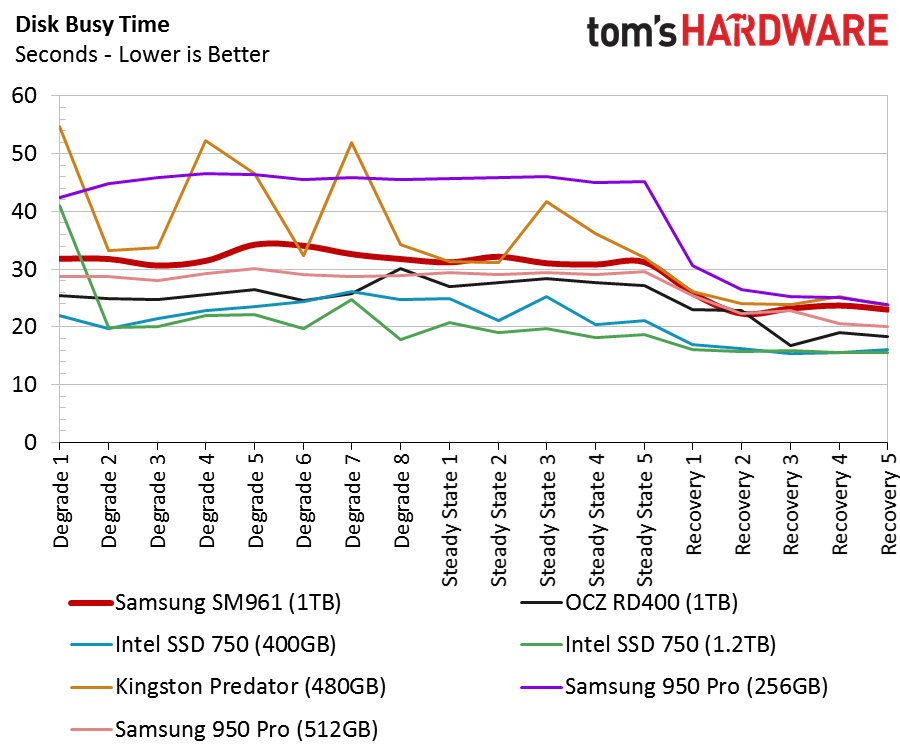Samsung SM961 SSD Review
The SM961 is the SSD that everyone is talking about because it provides up to 3,200 MB/s of sequential performance. No more rumors, today we test the new Samsung SM961 1TB NVMe SSD from the SSI group. Is this your next SSD?
Why you can trust Tom's Hardware
Real-World Software Performance
PCMark 8 Real-World Software Performance
For details on our real-world software performance testing, please click here.
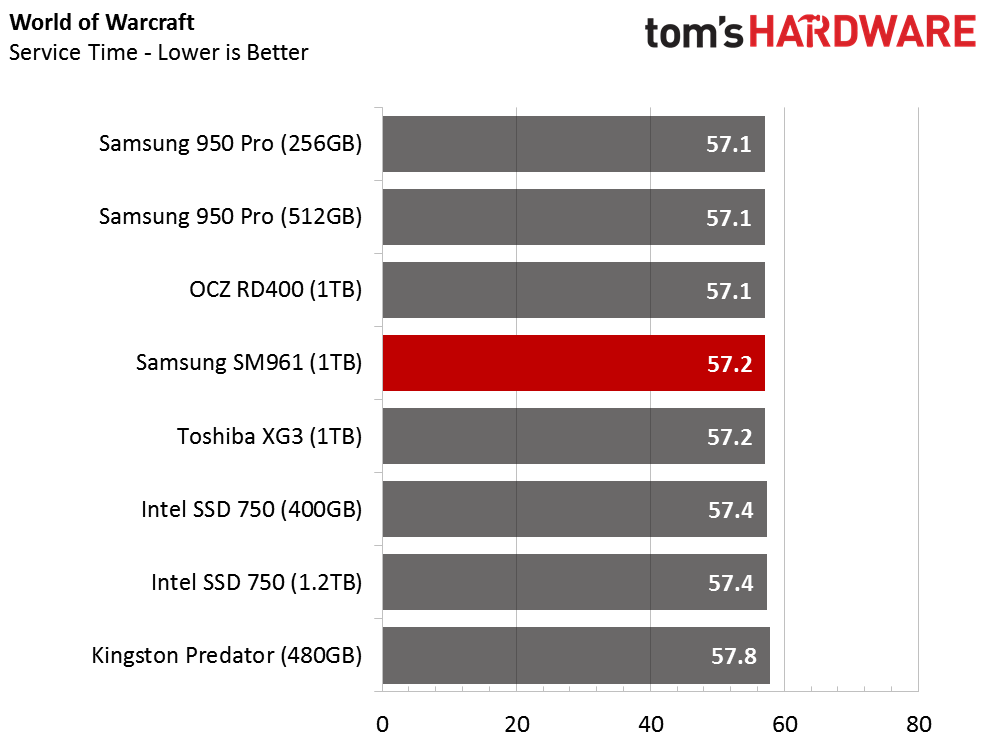
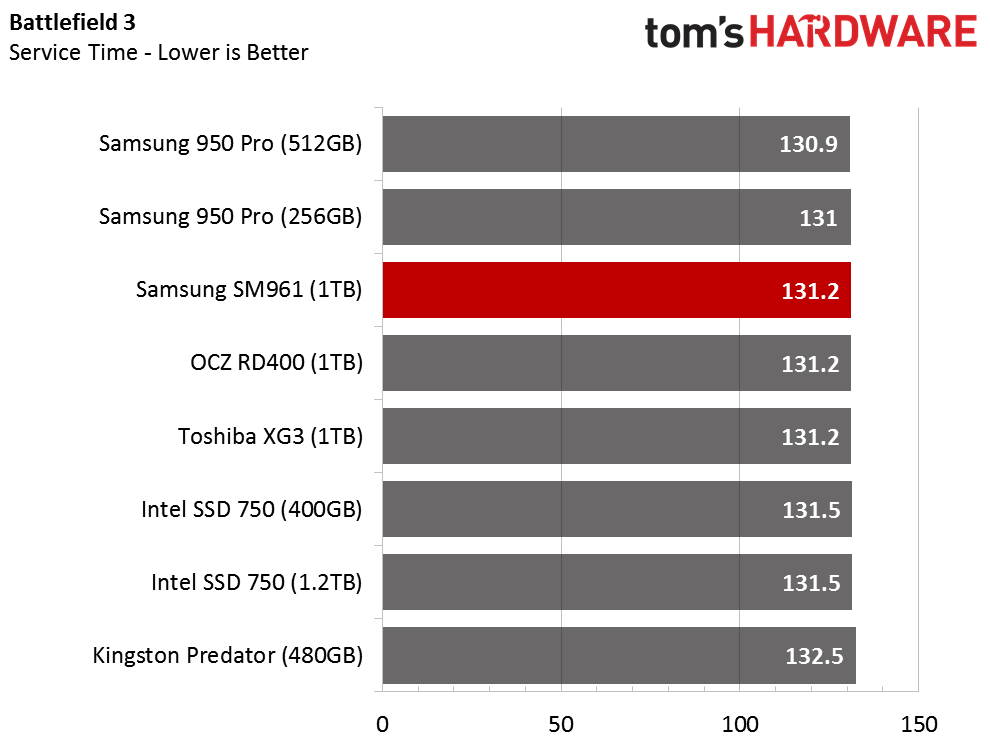
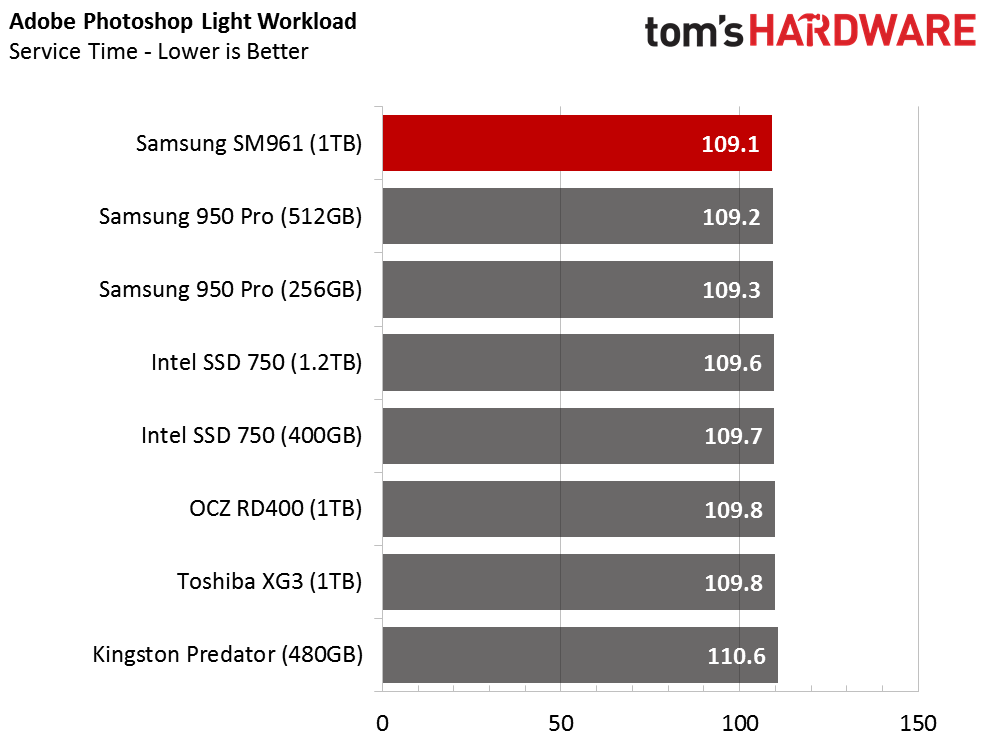
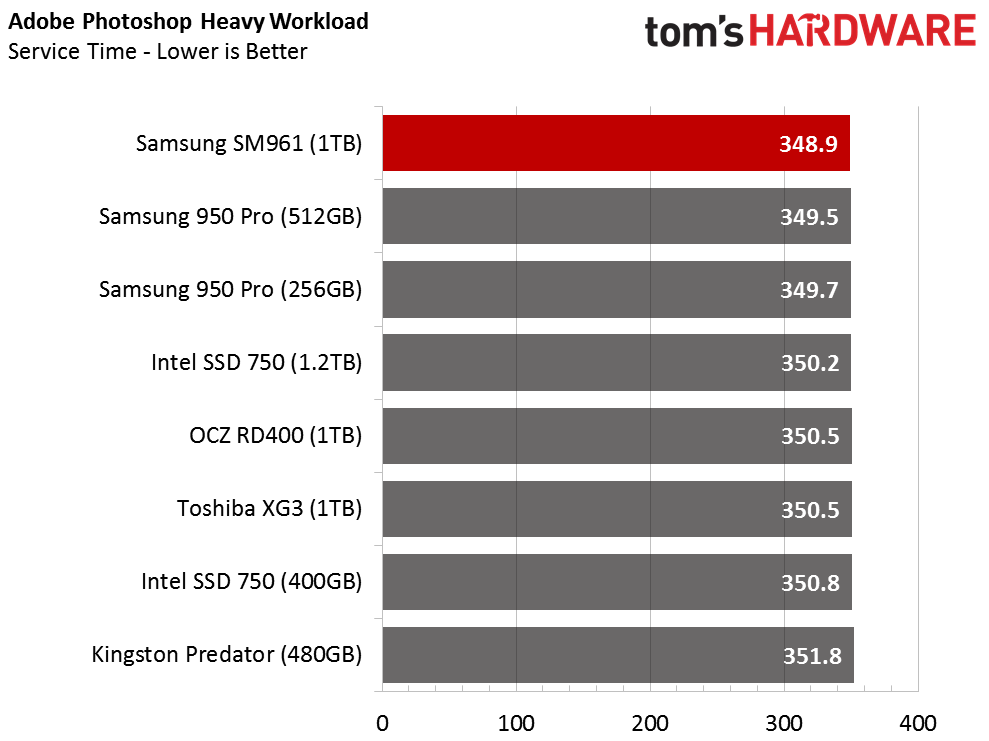
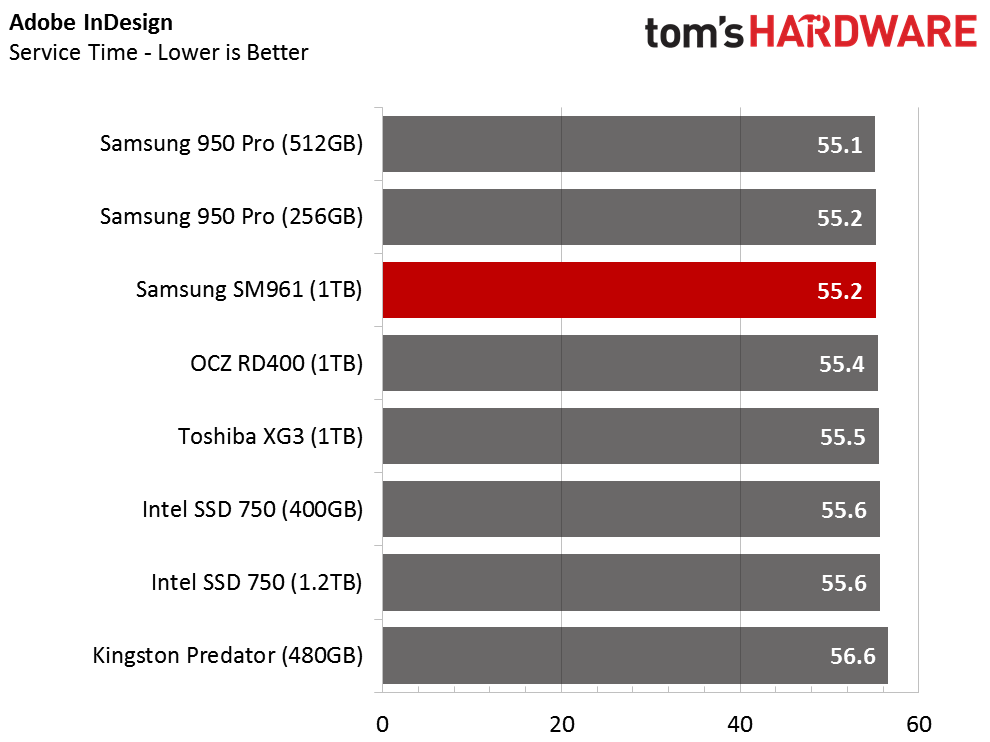
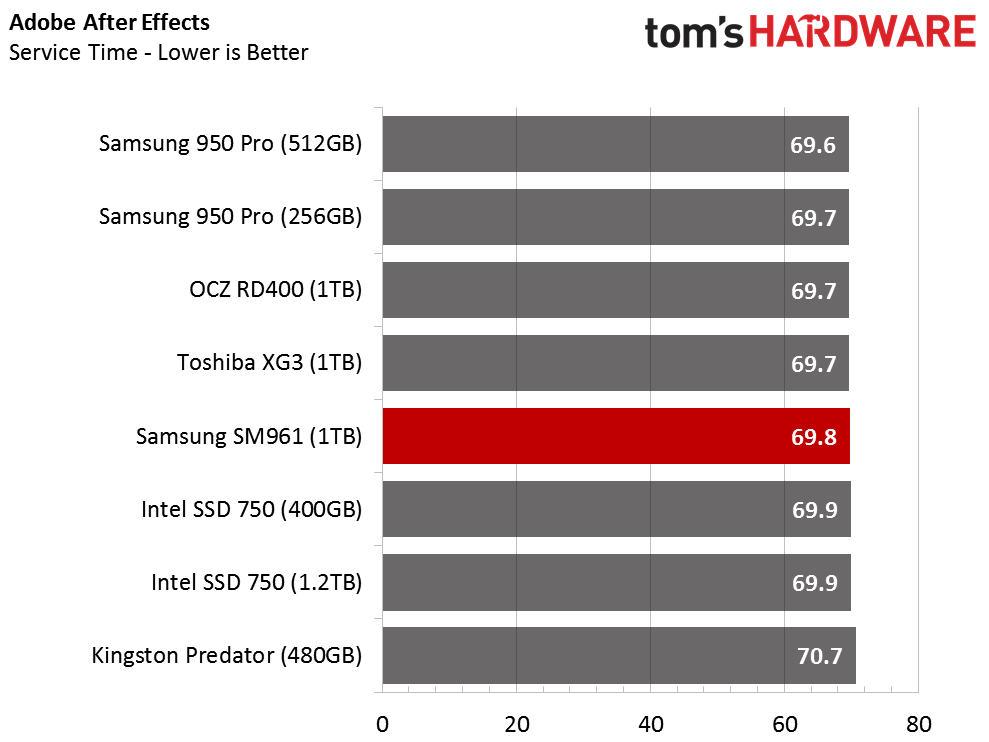
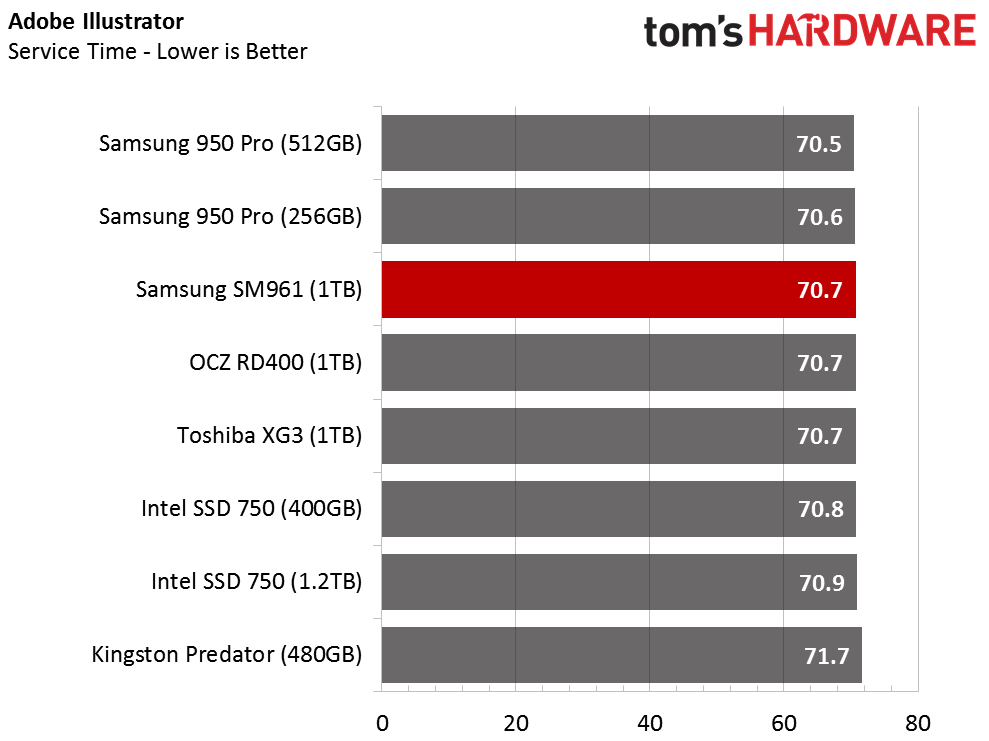
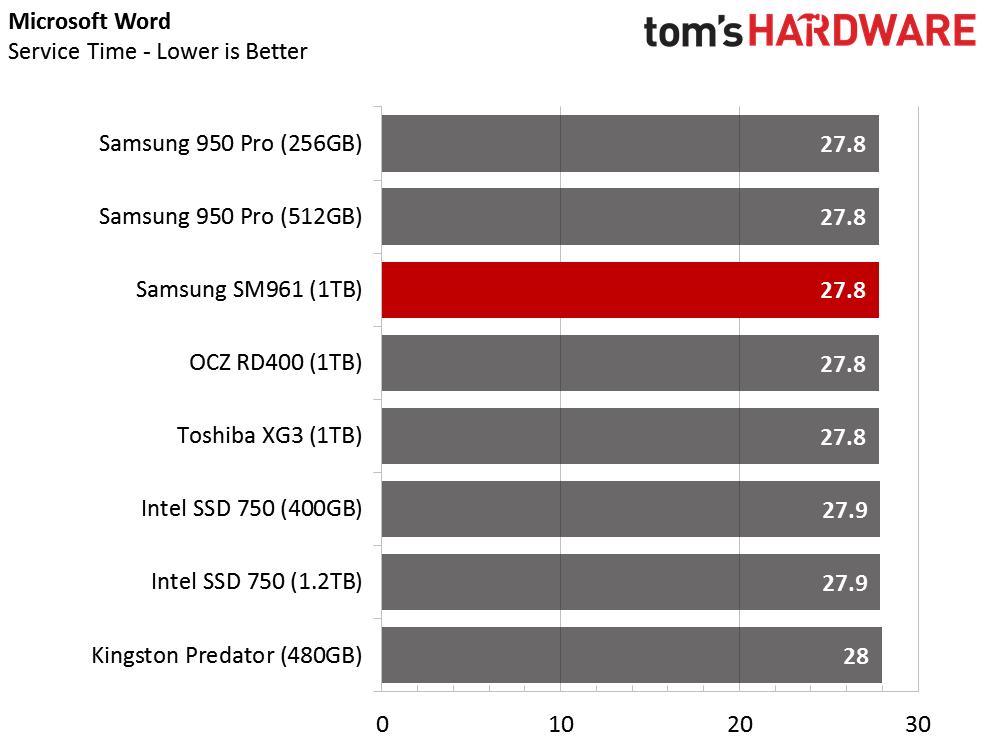
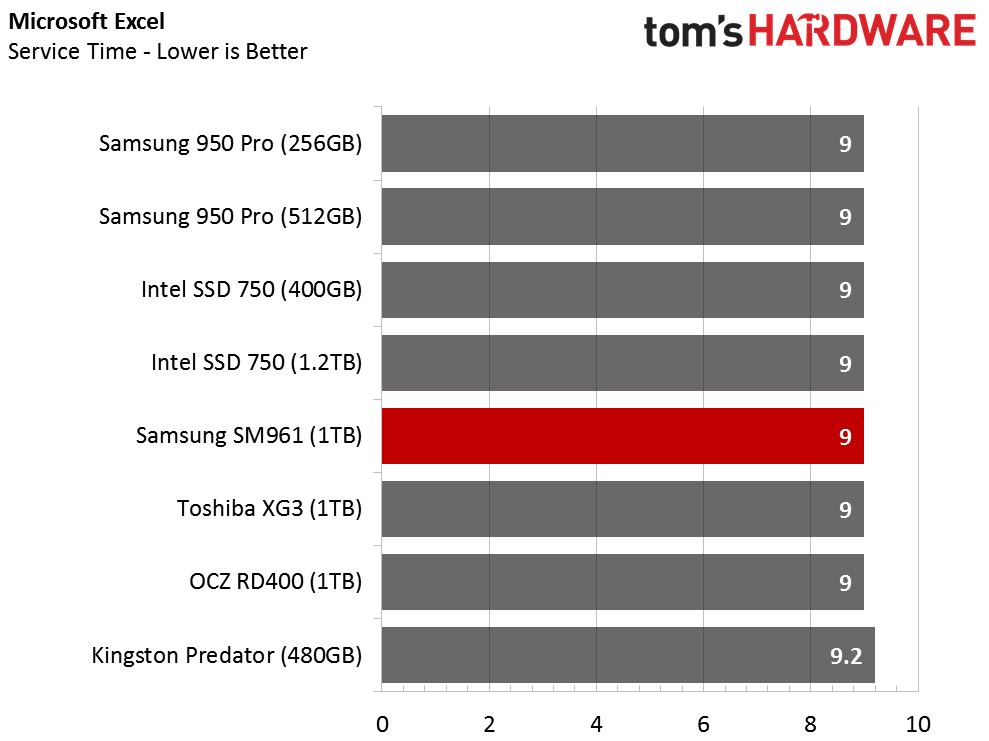
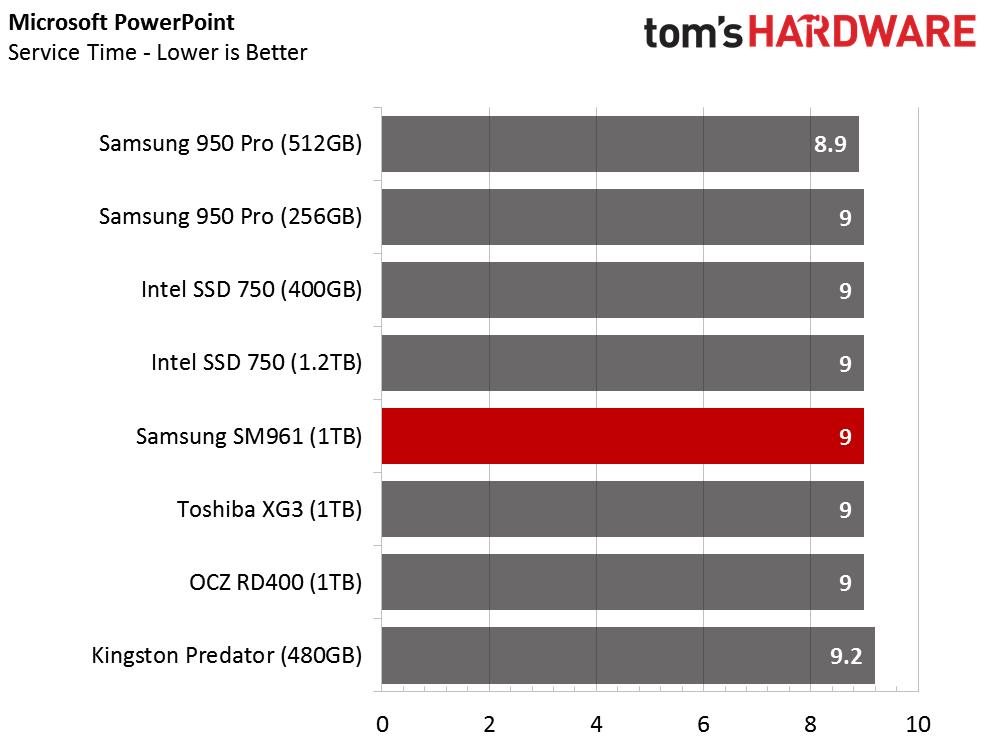
We spent an incredible amount of time testing our two SM961 1TB SSDs, and the PCMark 8 tests proved to be a real handful for this product. We expected much better performance from the SM961; it should have steamrolled the other products. We tested the drives with both Windows 8.1 and Windows 10 during our investigation. We also tested with two different Intel chipsets, the Z97 (Asrock Z97 Extreme6 with M.2 routed directly to the CPU) and the Z170 (Asrock Z170 Extreme7+ with M.2 routed through the PCH).
The SM961 didn't perform poorly in the real-world software trace tests, but we just expected more from the little fire-breather. Heavy sequential workloads allowed the drive to move to the top of the charts, but random workloads pushed the drive a little further down.
Here we see the performance from all of the tests combined. The SM961 only trails its 950 Pro brethren, but it enjoys a healthy lead over the other products.
PCMark 8 Advanced Workload Performance
To learn how we test advanced workload performance, please click here.
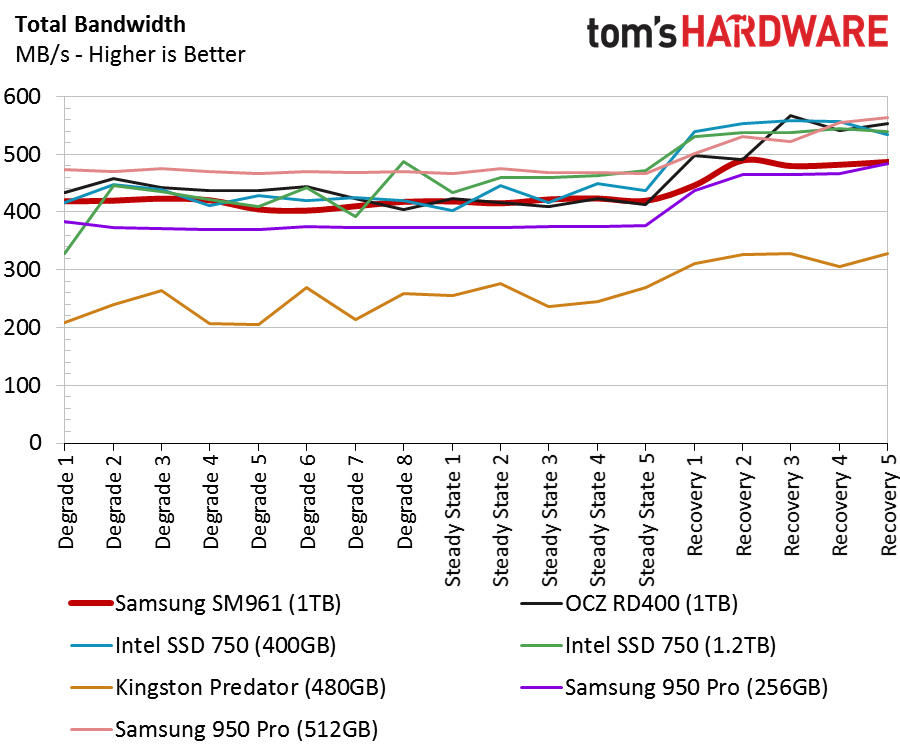
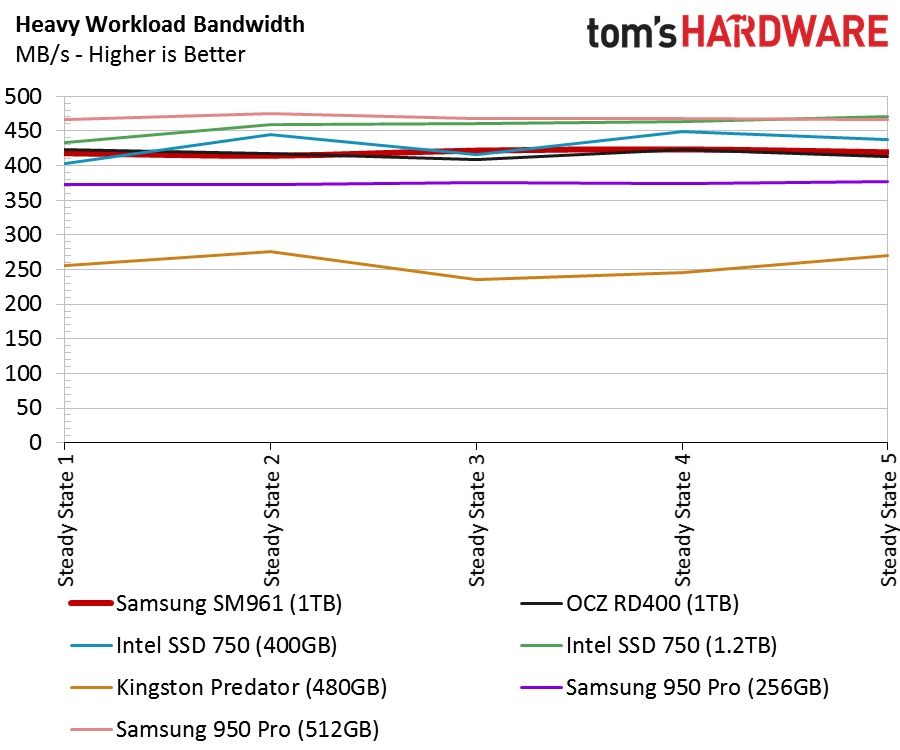
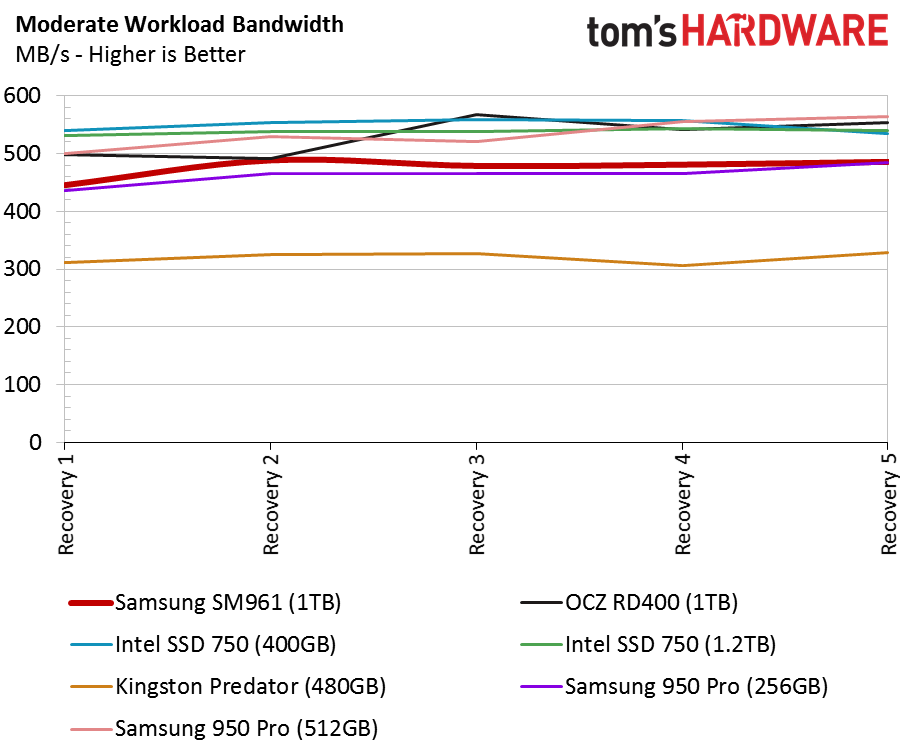
The Samsung SM961 is impressive, but it may not be the best high-performance SSD for all of our readers. The drive delivers excellent burst performance, but over time, its performance slows (and almost wears down) as more data is stored on the flash.
We ran some additional tests with the drive half and three-quarters full to confirm some of our suspicions. The new Samsung 256Gbit MLC NAND reminded us of Micron's new 384Gbit TLC flash from the Crucial MX300 review. Both architectures share something new, and until now, the largest die size we've dealt with was 128Gbit. That's not the important part, though. The transition from 64Gbit to 128Gbit die density caused performance issues that SSD manufacturers eventually overcome by developing the larger capacity size SSDs that increased parallelism.
Get Tom's Hardware's best news and in-depth reviews, straight to your inbox.
The SM961 uses just two packages with sixteen die per package. Samsung really should have spread the 32 die across four packages (instead of two) to increase the SM961's heavy workload performance. This would have increased the parallelism, and thus the sustained performance. The current SM961 architecture at this capacity size uses high-speed flash that delivers excellent burst performance, but the problem is that the controller is reading all of the data back through a limited number of channels.
Without getting too deep on a topic I've wanted to write about for a long time, we are also observing the SSD Yahtzee Effect. You can read more about it in this PDF from the Flash Memory Summit.
Total Access Time
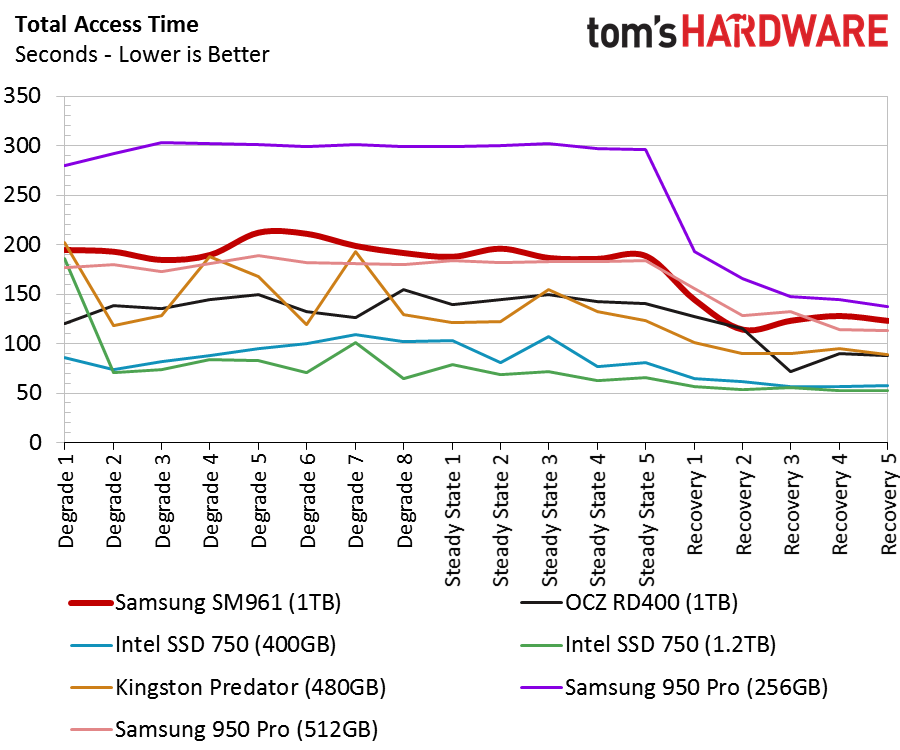

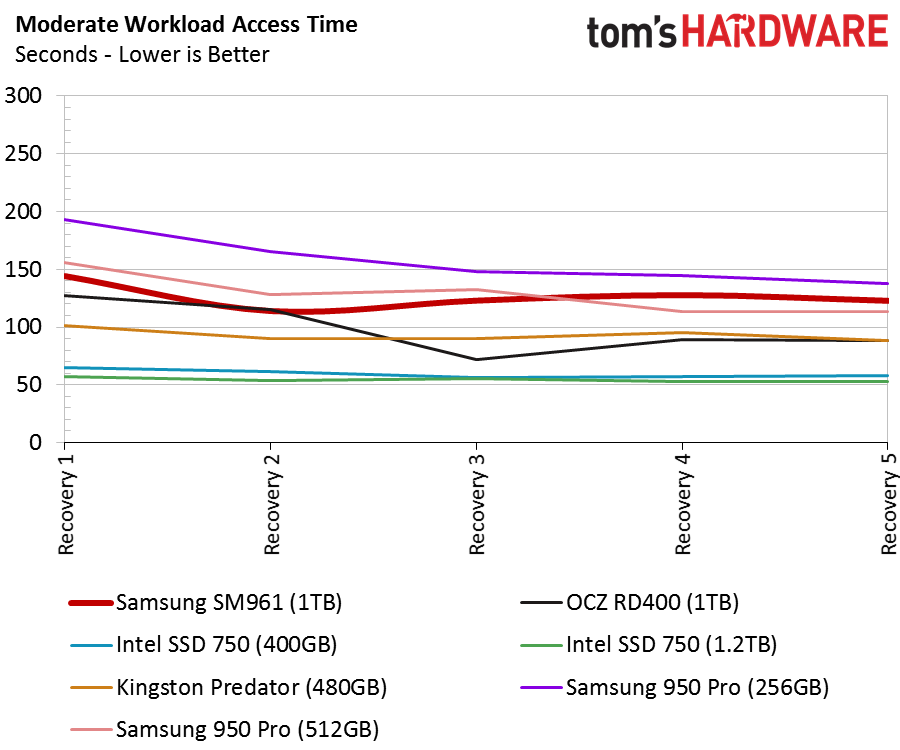
The SM961's high access time takes us down another road. The new 256Gbit die also increases the block size, which means the SM961 has to read, modify and write larger data sets. Couple that with what we discussed in the previous section and we can begin to understand why the SM961 has the highest random read performance we've ever tested, but does not surpass the 950 Pro under heavier workloads.
Disk Busy Time
Not to pile on, but the SM961 1TB also has to work harder than the 950 Pro 512GB to complete the same amount of work. This carries over into the power consumption measurements.
Notebook Battery Life
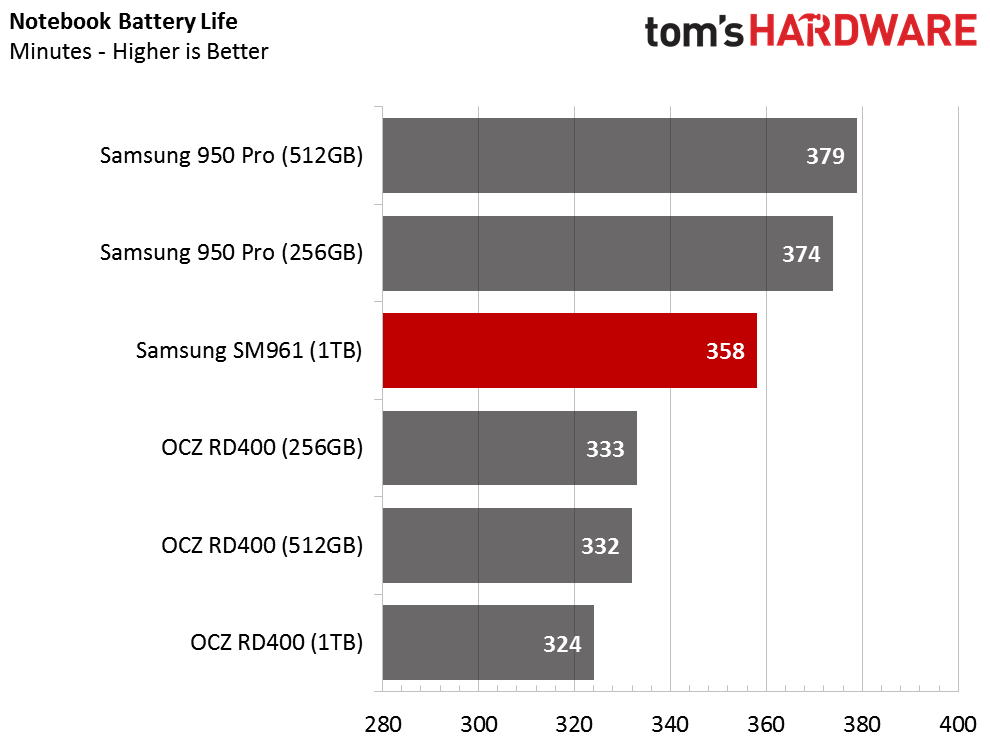
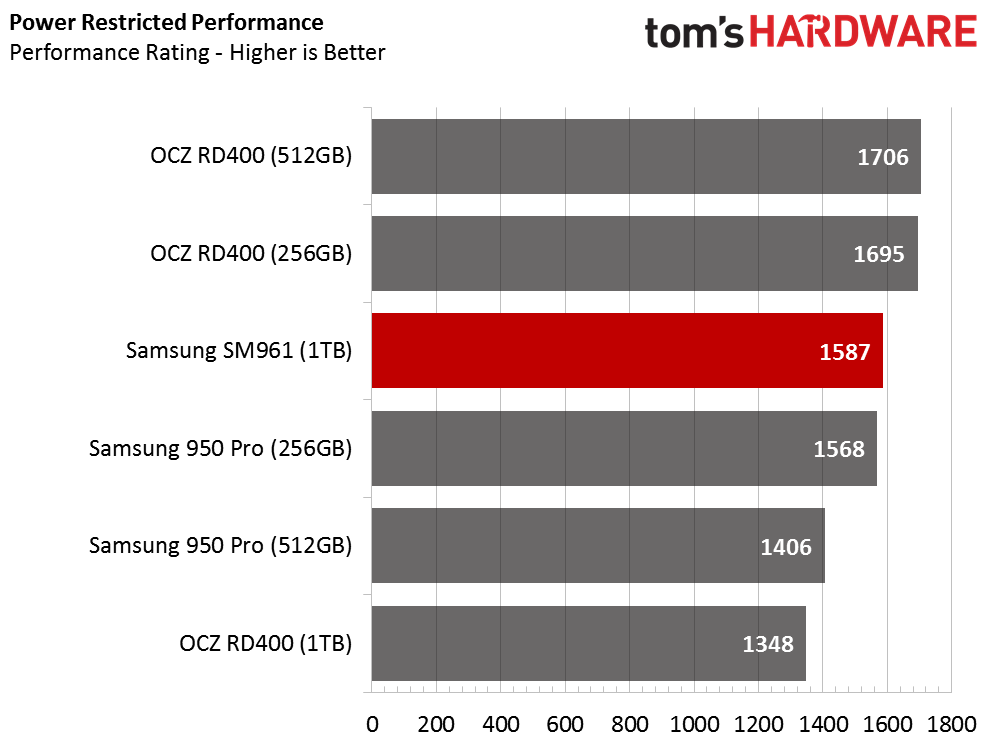
The Samsung SM961 would deliver equal or better notebook battery life compared to the 950 Pro 512GB if the flash was the only component that mattered. That isn't the case, though. The memory configuration reels performance back in for this freshman 48-layer V-NAND product.
The single-sided form factor forced Samsung to take the SM961 to an extreme that we didn't expect. Most likely one or more of the major OEM customers, such as Lenovo, wanted the drive in a single-sided M.2 form factor to shave a few millimeters off a notebook. If Samsung spread the flash out to four packages we may have seen better performance in all of the real world tests today.
Current page: Real-World Software Performance
Prev Page Mixed Workloads And Steady State Next Page Conclusion
Chris Ramseyer was a senior contributing editor for Tom's Hardware. He tested and reviewed consumer storage.
-
Sakkura Polaris controller? Can we maybe not all use the same codenames, please?Reply
Nice SSD though. Wonder when we get a retail version. -
TechyInAZ Wow, that's pretty sweet for how cheap it's coming to market.Reply
Can't wait to see how the 860 Pro and 860 EVOs do. That will be a blast. -
Paul Alcorn Reply18186821 said:Polaris controller? Can we maybe not all use the same codenames, please?
It will be interesting to see who sues first. -
My 3 month old 950 Pro is already obsolete :P OK not really. It is great to see these drives getting better and cheaper though. The 960 Pro should be a beast.Reply
-
Richard_141 My Lenovo T460S bought last month with a generically described "1TB NVMe" came with an OEM PM961 in it. Very nice and fast although having to use software bitlocker so far as either it's not eDrive/OPAL or can't enable it as Samsung Magician only works on retail drives...Reply -
CRamseyer Ah, thanks for the update. The PM961 is certainly on my radar. It's the TLC flash brother to the SM961. I would love to get my hands on that drive for three days and 9TB of data writes.Reply -
heliomphalodon "Intel RST issues in RAID 0 on Z170 (Intel's Fault)"Reply
This is a deal-breaker for me - and why is it Intel's fault? SM951 works fine with RST on Z170, while SM961 does not - and it's not Samsung's fault? -
Ninevah Unless I'm mistaken, there are articles on the web around how to setup a bootable RAID with multiple Samsung 950 Pros on certain motherboards. The key is that it only works if the mobo has Intel RST built into the UEFI. Here's the best article I've found on it: http://www.thessdreview.com/daily-news/latest-buzz/understanding-m2-3xraid0-nvme-boot-performance/Reply
Now, I've only seen Z170 boards with more than 1 M.2 slot, so it's arguably not worthwhile, as that site's tests showed. The limited PCIe bandwidth available on the Z170 probably negates any performance gains from such a setup. X99, however, has tons more PCIe lanes available. I don't get why we haven't seen X99 boards with multiple M.2 slots thus far. That seems like a perfect use of all those lanes--especially given NVIDIA's recent dropping of support for 3-way and 4-way SLI. What else are you going to use all those lanes for, now?

